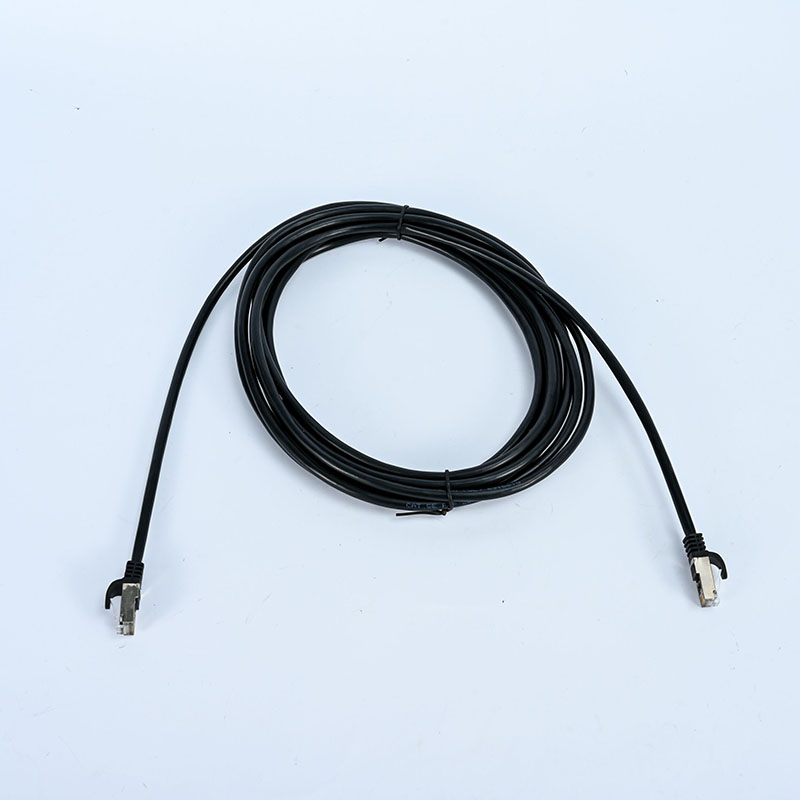The Main Points of Choosing Fiber Optic Cable
2022-03-01
The main points of choosing fiber optic cable
In our current data center network, fiber optic cable is an absolute development path, and it is one of the transmission equipment that many people have placed high hopes on. As the most popular transmission line at present, optical fiber has a longer transmission distance than twisted pair, and is more stable and less expensive than coaxial cable. In addition, the bandwidth capacity of optical fiber can also meet our needs for network transmission. There are also many ways to choose fiber optic cables.
For optical fibers, according to the number of cores, it can be divided into four types: central bundle type, layered type, skeleton type, and ribbon type. Different uses have different structures, so everyone needs to be clear about their uses before choosing. First of all, let's look at the central beam tube type. The central beam tube type can be said to be the lowest cost among several types of optical fibers. Therefore, it has a very obvious advantage in the protection of better transmission trunk lines.
Compared with the "fragile" layer-stranded optical fiber of the central bundle type, it has stronger toughness. It adopts the method of adding steel strands or steel wires in the middle, so it has waterproof, strong tensile strength, or can adapt to strong pressure measurement. Features. So it can be buried directly in the ground without special protection. At the same time, because it does not need to completely cut off the entire cable when constructing a branch, it can be applied by simply connecting the cable fork. Therefore, this also provides more convenient construction and maintenance conditions for data communication networks and the like.
Among these types of optical cables, the ribbon cable has the largest inner core capacity. Since it uses 4-12 core fibers arranged in rows to form units, and then the units are combined and arranged, so it can increase the number of cores of ribbon fibers to thousands of cores, which also greatly expands the bandwidth of the line. Therefore, the current network-level optical cables generally use bundled and continuous types.
If divided according to the purpose, then these optical cables will appear in a completely different pattern classification from the above-aerial optical cable, direct buried optical cable, pipeline optical cable, submarine optical cable and metal-free optical cable, etc. And their cable characteristics are also very different. For example, the aerial optical cable has high strength and small temperature difference coefficient. The direct-buried type does not have any protection in direct contact with the ground, so it must have strong compression resistance and moisture-proof and moisture-proof capabilities, as well as strong corrosion resistance. For pipelines and submarine optical cables, because they are all under the water under high pressure environment, the most important thing is undoubtedly the water pressure resistance and tension resistance of the optical cable.
The last category is the metal-free optical cable. This type of optical cable can be used with the framework of the high-voltage line, so the external force resistance requirement is the least, so it will be more convenient in construction. However, although this type of optical cable does not have an iron core in the core, it also has considerable requirements for compression resistance.
For the service life of the optical fiber, it is closely related to the construction medium of the line. At present, the main materials of optical fiber are fiber core, optical fiber ointment, PBT and sheath materials, etc. First of all, the fiber core can guarantee a high signal-to-noise ratio, a low bit error rate and a long-distance amplifier spacing during transmission, so it can be said to be a good choice for ensuring transmission quality. The fiber optic ointment acts as a drying agent and a liner, which not only protects the circuit from moisture corrosion, but also prevents the impact of vibration on the circuit.
For the application of underwater optical fibers, PBT materials with strong hydrolysis resistance must be used. Since the underwater optical fiber faces the threat of deep water pressure and underwater corrosion, PBT can make the fiber bundle tube have good pressure resistance and temperature adaptability, so it can ensure that the life of the equipment will not be shortened under continuous high pressure. The sheath material plays a very important role in the long-term reliability of the optical cable. It determines the tensile, bending, temperature adaptation, and natural aging resistance characteristics of the optical cable, and is also the key to the fatigue resistance of the optical fiber.

In our current data center network, fiber optic cable is an absolute development path, and it is one of the transmission equipment that many people have placed high hopes on. As the most popular transmission line at present, optical fiber has a longer transmission distance than twisted pair, and is more stable and less expensive than coaxial cable. In addition, the bandwidth capacity of optical fiber can also meet our needs for network transmission. There are also many ways to choose fiber optic cables.
For optical fibers, according to the number of cores, it can be divided into four types: central bundle type, layered type, skeleton type, and ribbon type. Different uses have different structures, so everyone needs to be clear about their uses before choosing. First of all, let's look at the central beam tube type. The central beam tube type can be said to be the lowest cost among several types of optical fibers. Therefore, it has a very obvious advantage in the protection of better transmission trunk lines.
Compared with the "fragile" layer-stranded optical fiber of the central bundle type, it has stronger toughness. It adopts the method of adding steel strands or steel wires in the middle, so it has waterproof, strong tensile strength, or can adapt to strong pressure measurement. Features. So it can be buried directly in the ground without special protection. At the same time, because it does not need to completely cut off the entire cable when constructing a branch, it can be applied by simply connecting the cable fork. Therefore, this also provides more convenient construction and maintenance conditions for data communication networks and the like.
Among these types of optical cables, the ribbon cable has the largest inner core capacity. Since it uses 4-12 core fibers arranged in rows to form units, and then the units are combined and arranged, so it can increase the number of cores of ribbon fibers to thousands of cores, which also greatly expands the bandwidth of the line. Therefore, the current network-level optical cables generally use bundled and continuous types.
If divided according to the purpose, then these optical cables will appear in a completely different pattern classification from the above-aerial optical cable, direct buried optical cable, pipeline optical cable, submarine optical cable and metal-free optical cable, etc. And their cable characteristics are also very different. For example, the aerial optical cable has high strength and small temperature difference coefficient. The direct-buried type does not have any protection in direct contact with the ground, so it must have strong compression resistance and moisture-proof and moisture-proof capabilities, as well as strong corrosion resistance. For pipelines and submarine optical cables, because they are all under the water under high pressure environment, the most important thing is undoubtedly the water pressure resistance and tension resistance of the optical cable.
The last category is the metal-free optical cable. This type of optical cable can be used with the framework of the high-voltage line, so the external force resistance requirement is the least, so it will be more convenient in construction. However, although this type of optical cable does not have an iron core in the core, it also has considerable requirements for compression resistance.
For the service life of the optical fiber, it is closely related to the construction medium of the line. At present, the main materials of optical fiber are fiber core, optical fiber ointment, PBT and sheath materials, etc. First of all, the fiber core can guarantee a high signal-to-noise ratio, a low bit error rate and a long-distance amplifier spacing during transmission, so it can be said to be a good choice for ensuring transmission quality. The fiber optic ointment acts as a drying agent and a liner, which not only protects the circuit from moisture corrosion, but also prevents the impact of vibration on the circuit.
For the application of underwater optical fibers, PBT materials with strong hydrolysis resistance must be used. Since the underwater optical fiber faces the threat of deep water pressure and underwater corrosion, PBT can make the fiber bundle tube have good pressure resistance and temperature adaptability, so it can ensure that the life of the equipment will not be shortened under continuous high pressure. The sheath material plays a very important role in the long-term reliability of the optical cable. It determines the tensile, bending, temperature adaptation, and natural aging resistance characteristics of the optical cable, and is also the key to the fatigue resistance of the optical fiber.



